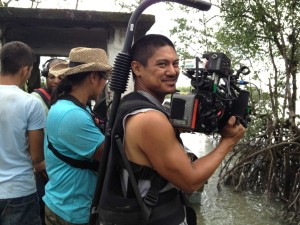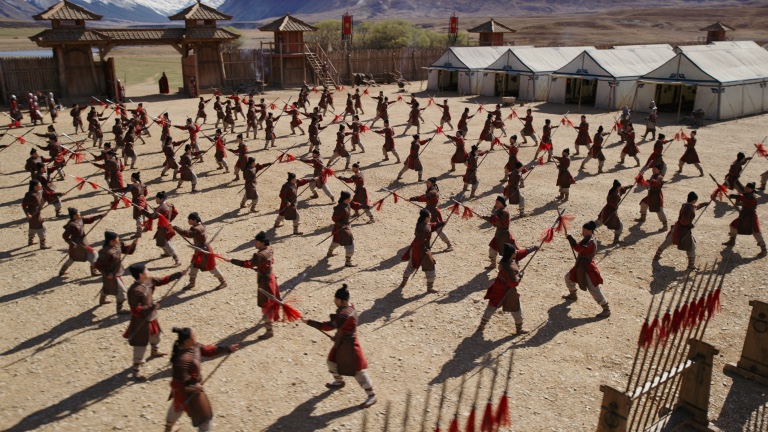
Filmed completely on location, Manos Sucias is a drama depicting the perils of two fishermen coerced into towing an underwater narco-torpedo up the Pacific coast of Colombia. The film’s producers, Márcia Nunes and Elena Greenlee, received a grant, (including a camera package), from the Canon Filmmaker Award Program to help shoot the film in 2013.
“The Canon EOS C300 Cinema camera was a great fit for this project,” Blanco said. “It gave us fabulous, robust imagery and it fits into a backpack. Many digital cinematography cameras are like computers with cameras attached to them. You have to boot them up, and in the two minutes it would have taken us to do that we could have lost the shot. We were in very unpredictable places, but I could turn the EOS C300 camera on and be ready to roll.”
With bodies weighing just over three pounds, the two Canon EOS C300 Cinema cameras – and an assortment of Canon CN-E Series Cinema prime lenses and Canon EF-Series zoom lenses – enabled Wladyka, Blanco, and their small crew to carry their own gear, maintaining a highly mobile and naturalistic hand-held production style. Far from any rental house or other support services, Blanco explained that larger cameras might not only have bogged them down, but could have been disastrous while shooting in stilted houses built on pilings over Buenaventura harbor. “Heavy equipment could have fallen right through the floor and into the bay,” he said.
“The Canon EOS C300 Cinema camera was a Godsend for us in those locations,” Wladyka added. “It is very ergonomic, with a small body that let me place it in different parts of a moving taxi-van, or alongside a moving boat, or in a cramped jungle area. It doesn’t have a large profile that prevented me from being able to handle it the way I wanted to, which helped maintain a lot of the energy and claustrophobia we were going for in certain scenes.”
Blanco explained that he recorded all footage in Canon Log Gamma, which captures the full exposure latitude that the camera’s Super 35mm CMOS sensor is capable of delivering. “The Canon EOS C300 Cinema camera’s image definitely gave us a lot of play room in post to fix and accentuate things and maintain a really strong cinema look,” said Blanco.
Blanco noted that the low-light capabilities of the C300 were crucial to the film’s production style. “A large lighting department needs a big crew, which wouldn’t have worked for our stealthy filmmaking style,” he said. “We also needed to shoot interiors to show the home life of our characters, but many of those places didn’t have dependable electricity, so movie lights would have been dangerous. Being able to use natural lighting with our Canon EOS C300 Cinema cameras and Canon lenses definitely helped us shoot what we wanted while also staying safe.”
Blanco noted how the low-light advantages of the Canon EOS C300 Cinema camera also enabled him to capture the unique quality of equatorial sunlight at specific times of the day. “Blue hour – when the light is starting to fill the sky but just before there is direct sun – is gorgeous,” he explained. “The EOS C300 cameras and our Canon lenses are so fast we were able to get really beautiful blue hour images as the main characters were shoving off in the morning to tow their torpedo, and when they were putting up for the night, building camp.”
Lenses used to shoot Manos Sucias included three Canon Cinema prime lenses (the CN-E24mm T1.5 LF, CN-E50mm T1.3 LF, and the CN-E85mm T1.3 LF) and four Canon EF-series zoom lenses (the EF-S 10-22mm f/3.5-4.5 USM, EF-S 17-55mm f/2.8 IS USM, EF 70-200mm f/2.8L IS II USM and the EF 100-400mm f/4.5-5.6L IS USM).
“Joe and I developed a naturalistic look for Manos Sucias, but we also wanted to make bold, aesthetic choices for certain sections of it, building different visual motifs,” said Blanco. “Some of these were wide tracking shots from behind our performers, allowing us to immerse the audience into their world. As much as we all love a shallow depth-of-field, I also wanted to show – and Joe wanted to develop – the unique ‘world’ of Buenaventura, Colombia. We used the 24mm Canon Cinema prime a lot behind our performers as they reluctantly became immersed in the smuggling scheme. I tracked the performers through the jungle and through the city, and the gearing on the Canon Cinema prime let us use the wireless focus-pulling unit.”
“We needed every bit of support we could get to green light Manos Sucias. The generous grant from Canon that our producers Elena Greenlee and Márcia Nunes accessed through Film Independent went a long way to getting this story on the screen,” Wladyka concluded. “Joe had been there first and learned about conditions from the local community, which inspired our script. The hospitality and generosity of the people in the area ultimately allowed Manos Sucias to be made. They want the world to know their story, and the Canon EOS C300 Cinema camera and Canon lenses gave us the low profile and versatility we needed to do that.”





